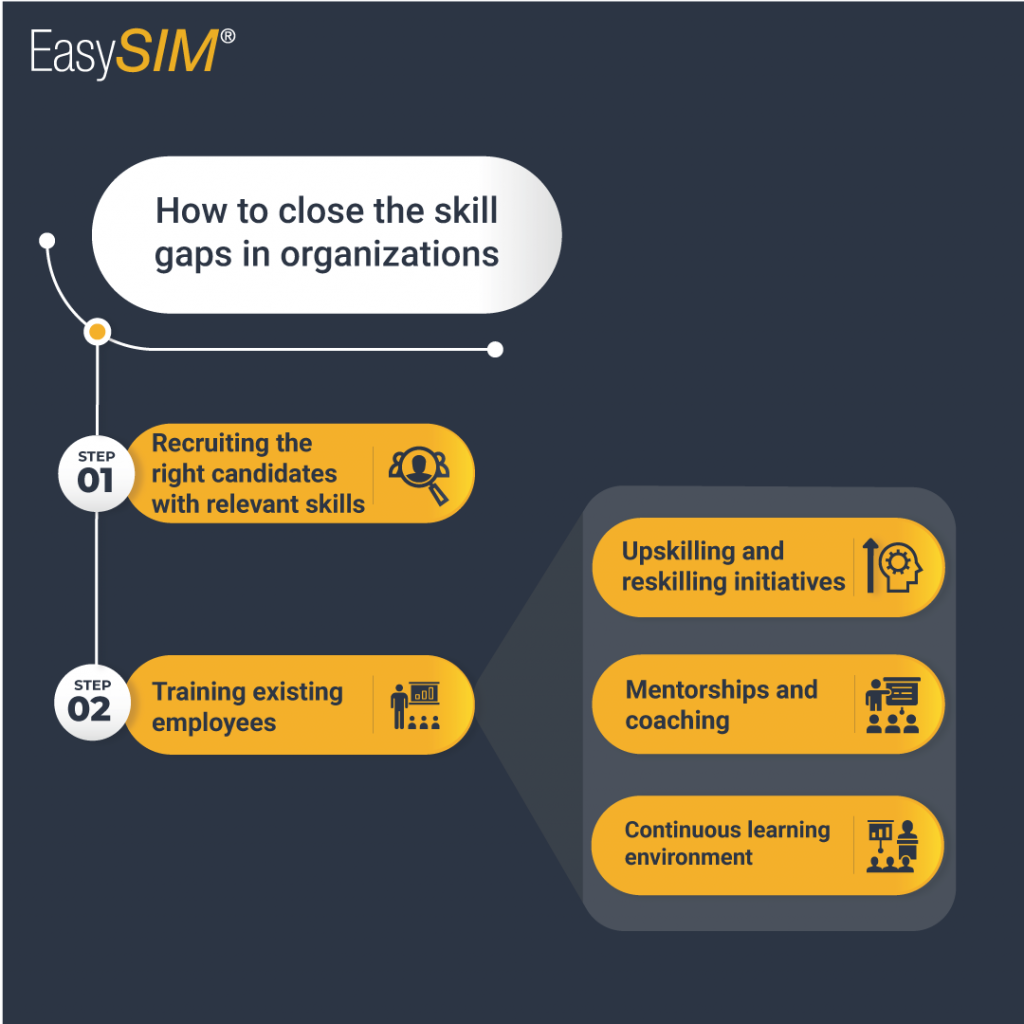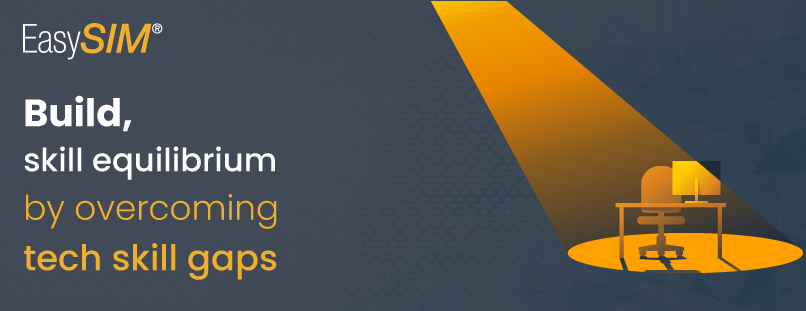Summing Up The Current Scenario
Since the year 2019, the world has witnessed catastrophes back to back from Covid- 19 pandemic, the Great resignation period and AI technology disruption. No wonder, these economic crisis events have led to the widening of skill gaps in the technology industry as a whole which will worsen in the upcoming years. There is an urgent need for cybersecurity, AI/ML, cloud computing and other tech professionals to bridge the skills gaps and meet the demands of the industry.
Apparently, 87% of companies either reported current skill gaps or expect to have them in a few years. 56% of recruiters also predicted that AI, ML and other automation will cause a major shift in organizational skill requirements. Furthermore, 62% of HR directors believe that employees will need to reskill or upskill at least once a year to remain a competitor in the global job market.
This year, many organizations globally are going to focus on recruiting brilliant minds with the right skill sets and providing reskilling/upskilling training programs to their existing employees. However, finding the right candidate with relevant skills is one of the biggest challenges in the industry.
In this blog, we will discuss why and how organizations are going to address the technological gaps and how they can fix such skill gaps in 2023.
Technological Skill Gaps 2023
Ever since the beginning of the covid 19, the tech sector has grown by leaps and bounds and it’s still in the growing stage. We all know what happens when the tech sector grows: new technologies roll out, new job opportunities arise and demand for relevant skills in organizations grows. Along with these, technological skill gaps also widened.
Of course, the organization needs skilled employees in order to keep up with the latest technology and the business world. But, because of the disparity in the talent pool, there is a rise in demand for professionals in data science, machine learning, artificial intelligence, blockchain development, cyber security, data storyteller, and digital marketing in 2023.
Why do organizations need to close the tech skills gap?
Finding a skill gap means that organizations are unable to recruit skilled employees with the right competencies to fill the job vacancy at their workplace. Facing such a situation leaves many organizations at a competitive disadvantage in the market. Furthermore, it creates a negative impact on organizations like:
- Low work productivity rate: Employees who are not equipped with the right skills, will not be able to accomplish tasks which are vital for business growth and development.
- Low-performance ROI: Without the right capability, an employee may not be able to achieve the desired outcome which can demotivate them and can result in a low-performance level.
- Decreased profits and revenue generation: Having low rates in work productivity and performance ROI leads to decreased profit and revenue which negatively hamper their business operation and in some cases, it may result in bankruptcy.

To reach the skill equilibrium, organizations must ensure that skill gaps are bridged and closed which can only be done by:
- Investing in Upskilling/Reskilling initiatives: Recruiting new employees may resolve the skill gap issue for the short term. The organizations should invest in long-term strategy ie., reskilling and upskilling initiatives so that current employees would remain up-to-date with the latest industry trends and become more prepared for the future.
- Introducing mentorship and coaching training programs: Mentorships and coaching programs allow employees to shadow their experienced managers and pick on the intricacies of the job which help employees to give their 100% performance and improved work productivity.
- Fostering a continuous learning environment: By providing rewards and applauding their employees for learning new skills, organizations create a positive learning environment which not only encourages the employees to learn skills continuously but also gives confidence in accomplishing the tasks in the future.

Organizations achieve business growth and gain a competitive advantage in the market by closing the skill gaps. But, it will only happen when their employees are well-versed with the latest technological tools and digital skills. With upskilling/reskilling training programs, mentorships and a supportive learning environment, organizations can ensure that employees are well-prepared for future challenges.
What organizations should do to reduce such gaps?
The skill gap has become one of the biggest challenges that most organizations are facing now and the need to tackle such issues has become more imperative than ever.
There are ways in which organizations can create an impact in response to reducing skill gaps:
- Recruiting new employees that meet the demands of the organization
Organizations should hire new employees after analyzing whether their knowledge and competencies are what is required by the organization. They should expand their search and should consider otherwise overlooked talent pools such as immigrants, old-age employees, people with disabilities, and veterans to bring fresh talent into the organization. They should also reprocess the recruitment drive and focus on bringing talents based on their skills and competencies rather than education, age and irrelevant work experience.
- Training existing employees to meet the demands of the organization
Organizations should upskill or reskill their current employees so that they can enhance their skill sets and improve their work productivity and overall performance. By providing personalized training programs, employees will be able to meet the demands of the organization and be well-prepared for the future. Furthermore, organizations must provide learning resources and work opportunities to drive their employees towards continuous learning.
Both ways are effective and impactful in addressing the technological skill gaps. Organizations need to analyze their learning needs and skill requirements, and then plan their learning strategy to harness their workforce’s full potential and bridge the skill gaps.
How can EasySIM champion organizations and become a hero in addressing such issues?
EasySim is a competency-based simulated platform that focuses on assisting organizations in identifying, managing and enhancing their employees’ overall performance. It provides a competency framework which aligns the skill acquisition and organizational requirements, leading to better outcomes in reducing the skill gaps.
One of the fundamental features that EasySIM provides is skill gap analysis.
Skill gap analysis is an effective strategic tool that evaluates the difference between the current skill sets that an organization possesses and what is required by the organization. It also identifies employees’ learning needs that organizations require in order to meet the demand of the organization.
By deploying the skill gap analysis, organizations can determine what competencies, abilities and skills are missing from their employees’ profiles. The feedback helps organizations in developing their training programs.
Conclusion
Globally, the Tech industry has grown from $8179.48 billion in 2022 to $8852.41 billion in 2023 at 8.2% CAGR and is predicted to grow to $11995.97 billion in 2027 at 7.9% CAGR.
To reach such a level, organizations must ensure that they have well-trained and skilled employees that will contribute to the organizational growth. Only skill gaps can prevent the organization of predicted growth from happening in reality. By closing skill gaps and building capabilities, organizations can reach skill equilibrium and also get long-term advantages. But, it requires the continuous efforts of both organizations and their employees.






























